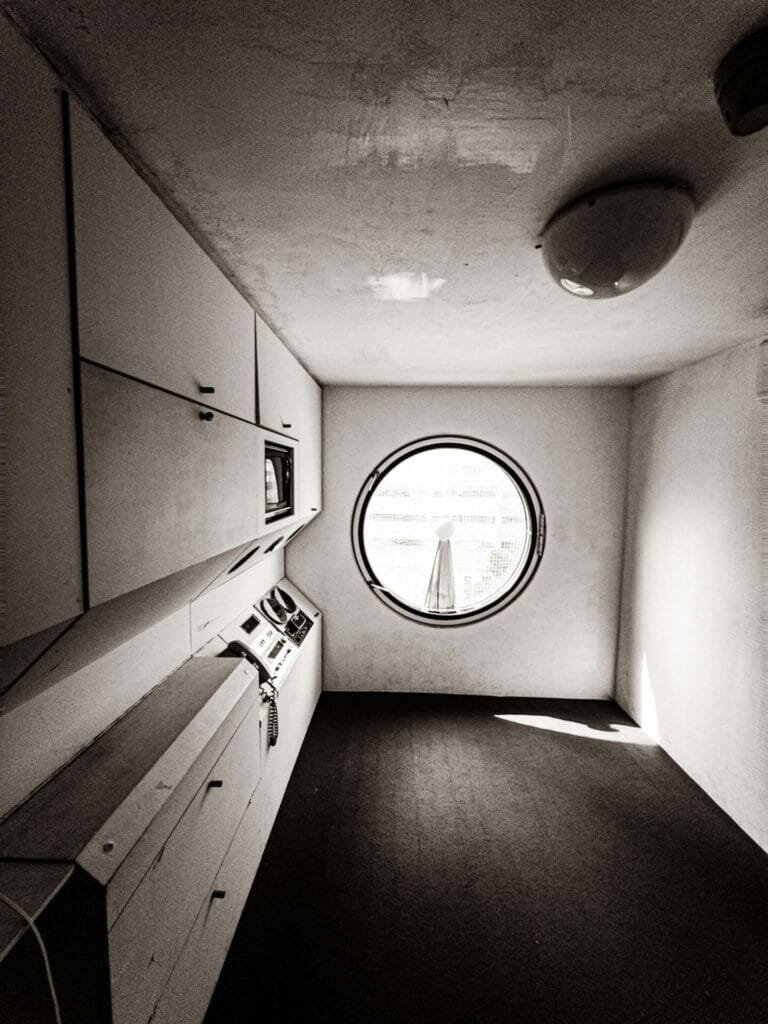Tokyo is about losing one of its most iconic buildings. Its fate now sealed, the Nakagin Capsule Tower, with its parallel stacks of tiny pieds-à-terre in capsule form, will disappear from Ginza, where it has stood since nineteen seventy-two.
It is instantly recognizable. It looks like nothing else. And it will undoubtedly be replaced by something with neither characteristic.
Its detractors often seem to see it as an eyesore, revealing an allergy to visionary design on their part, or at very least an intolerance of healthy variety.
They also readily point to something that is sadly very true: it is in poor condition and getting worse.
Unfortunately, the future that architect Kisho Kurokawa envisioned for his mold-shattering masterpiece is not the future it got, and now, forty-nine years later, it stands there with the clock counting down to zero.
Despite its practical failings, it remains highly successful as a design. Even in its current state of disrepair, it embodies an ethos and remains suffused with the confident optimism, enthusiasm, and clarity of vision that brought it into being in the first place. Few buildings ever manage to command such remarkable presence, and many that do lose their edge as the rest of architecture catches up around them.
In this case, the field never closed the gap.
If only these things were enough to keep it around another half century or more. But they are not. All is lost, or would be if it were not for a feature of the design itself.

The structure was originally erected in just thirty days, this being made possible by its modular design. All one hundred forty capsules were manufactured off site and trucked in, ready to be lifted by crane and installed.
It was meant to be renewable—evergreen in a way that never materialized. The concept of hot-swappable living units remains compelling, but never came to be. Even so, this innovation has proven to be of value in the end, as the capsules will be removed before the rest of the building is torn down. Many will be refurbished and given new roles at new locations.
So, while the iconic building as we know it today will soon be gone, much of what comprises it will survive to see a new phase of existence. The Nakagin Capsule Tower will assume a new, distributed form.

It’s not ideal, as architectural preservation goes, but at least it’s something. Not bad, one supposes, given the circumstances, and better than losing it entirely.
The locations of the capsules will necessarily change and multiply, as will the views from the circular windows at the end of each capsule, and one wonders what stories these new chapters will tell.
It’s hard to say what the future holds, but it’s worth remembering that, even when you don’t really want to go, sometimes a change of scenery ends up being quite nice in the end. Especially when the alternative is total annihilation.



